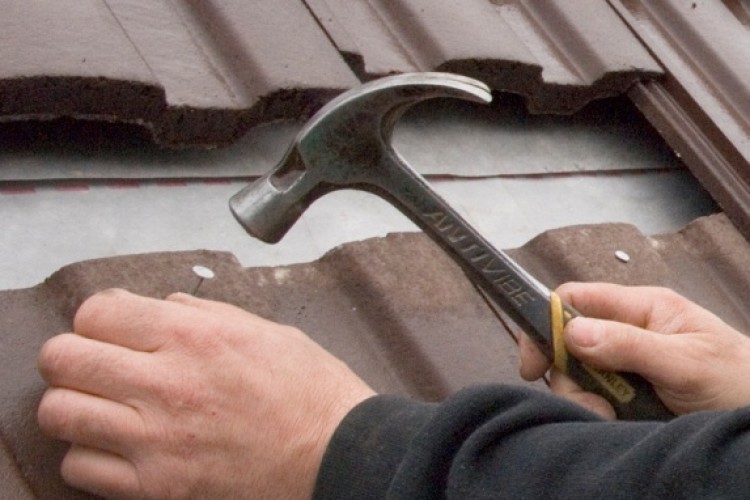According to manufacturer Marley Eternit, the new standards will improve the security and weather resistance of roofs.
BS5534, the code of practice for slating and tiling, has been revised to make UK roofs more secure in the face of increasing extreme weather events, and will be mandatory from the end of February 2015.
There are three significant changes; every tile will have to be mechanically fixed with a degree of clipping required on most roofs and mortar alone is no longer deemed sufficient on its own to secure tiles and their associated fittings to a roof, so areas including ridges, hips and verges will now require mechanical fixing as well. The standard also introduces new requirements to secure lightweight underlays and prevent a recent problem of ‘ballooning’, caused by wind deflection, which has been known to place a load on the underside of the roof covering, capable of dislodging it.
Marley Eternit has introduced tools and products to help contractors and builders meet the additional fixing requirements.
Product manager Gavin White said: “This is the most significant change to the way roofs are fixed in the UK for years and it is an important step in ensuring a consistent standard to withstand future extreme weather events and bring us into line with the European equivalent. While these changes will predominantly affect roofing and building contractors, those selling and specifying roof products also need to be aware of the consequential effects of the new standard, as there are products which can be used to reduce the additional time and cost which could be incurred as a result.
“The change, which is likely to have the most impact on installation time and cost, is the increased amount of tiles that will need to be clipped and nailed. Although the minimum recommendation in new version of BS5534 is that every tile must be nailed, in general, there will be a requirement to clip a degree of tiles on all roofs being installed to the British Standard, depending on location, exposure, building type and roof pitch.

“In anticipation of these changes, we have been working on products and tools to help contractors and builders deal with the additional fixing requirements. We know that clipping is the most time consuming of all mechanical fixing methods and is the area that has the potential to increase roof labour time the most. Therefore we have developed SoloFix, an affordable one piece clip and nail made from ZiAl, which not only saves up to 30% on clipping time, but delivers a high strength, high performance solution which can be used for all UK exposures including corrosive marine environments. We have also updated the TileFix estimator on our website so that specifiers and roofing contractors can get an accurate overview of minimum roof fixing requirements under the new BS5534 standard.”
The new changes also mean that mortar alone is no longer deemed as sufficient to secure tiles and their associated fittings to a roof and Marley Eternit anticipates that this will lead to an increase in dry fix systems.
Mr White added: “Whilst a roofer, installing to the British Standard, can still use mortar, they will only be able to do so with the addition of a mechanical fix. Consideration also needs to be given to ensure a suitable roofing mortar is created through the correct sand and cement mix; this is also outlined in the standard. The restrictions now in place surrounding the use of mortar, and in particular, the extra cost that comes with the addition of a mechanical fix, will likely result in a further shift towards the use of full dry fix systems. These not only provide a mortar and maintenance free way of fixing, but also, in many cases, contribute towards ventilation required to meet BS5250.”
In addition, lightweight underlays now have a new set of requirements to ensure they are secured sufficiently, with the purpose of preventing the occurrence of ‘ballooning’ or ‘tenting’, caused by wind deflection. This can, in some circumstances, place a load on the underside of the roof covering, causing it to dislodge and come off.
The revised BS5534 was published on 31 August and there will be a six month crossover, or co-existence period, where the two standards will be available to use. The new standard will become mandatory at the end of February 2015.
Got a story? Email news@theconstructionindex.co.uk



